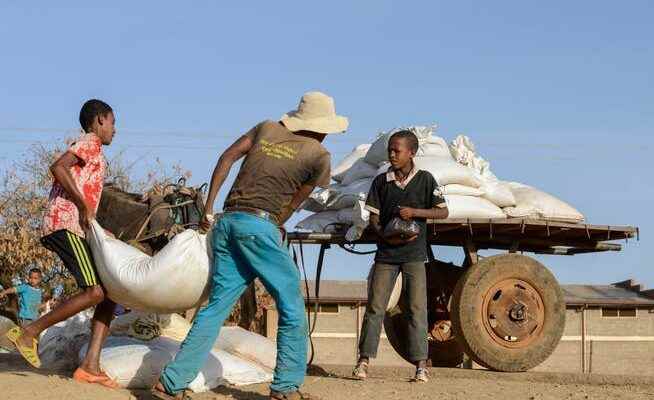In large parts of East Africa, millions of children are at risk of starvation. Cries for help from local authorities, UN organizations and NGOs have so far gone largely unheeded. To prevent a conflagration, we must act now.
Innovative programs are needed to protect families in Africa from the effects of climate change.
Do you remember the horrific images of emaciated children in Somalia eleven years ago? These scenes threaten to repeat themselves – only on a more gruesome scale. East Africa is facing its worst drought in decades.
Instead of two rainy seasons a year, the population in Ethiopia, Somalia and northern Kenya is currently enduring the fifth dry period in a row. Hundreds of thousands of people are forced to leave their increasingly hostile homes. Rising food prices and an unstable political situation are exacerbating the food situation.
Avoidable situation
Famine has already been declared in two areas of Somalia. Between October and December 2022, an estimated 6.7 million people will be affected by acute food insecurity in Somalia alone. Every day, every minute, Somali infants are brought to health centers for treatment for life-threatening malnutrition.
Our Unicef colleagues on site report of mothers who, after weeks of starvation and after fleeing dozens of kilometers with their small children, are completely exhausted and exhausted. They describe arriving at Unicef-supported public health centers hoping for water, food and treatment for their children. And they describe how families sell their girls to third parties through early marriage just so the girls don’t starve.
The images and stories that reach us from East Africa today are reminiscent of those from 2011. At that time, over 260,000 people died in Somalia. Such a hunger crisis is actually avoidable because it is predictable. At that time, there was a consensus in the international community that such collective suffering should never happen again and that it would act sooner in the future. Despite the global obligation to prevent crises at the time, calls for help from local authorities, UN organizations and NGOs have largely gone unheard. The tense global crisis overshadows the plight of the people in East Africa.
From nutritionists to ranchers, however, we are hearing that the current situation is even worse than it was 11 years ago. In fact, many people in large parts of East Africa are already living in conditions that are tantamount to famine.
A system change is needed
The fact is: time is ticking against the starving population of East Africa. This makes it all the more urgent to increase emergency aid for children and their families quickly and noticeably in order to save lives that are in acute danger. It may then be enough to put out a burning fire, but it will not be enough to prevent a wildfire.
Without major and sustainable measures and investments, there is a risk of child deaths on a scale not seen in half a century. In addition to humanitarian aid, we must therefore sustainably reform and adapt the food systems and basic health care for children worldwide.
A system change is needed here. And we must encourage innovative programs that protect families from the effects of climate change. We must not stand by and act as one: governments, local authorities and the international community, but also the private sector and aid and development organizations. The needy children need our support now.
Bettina Junker is Managing Director of Unicef Switzerland and Liechtenstein.
